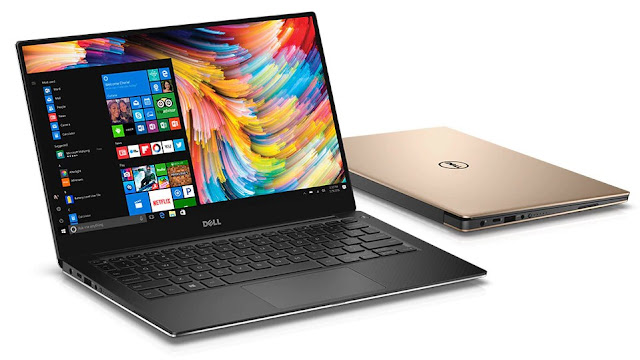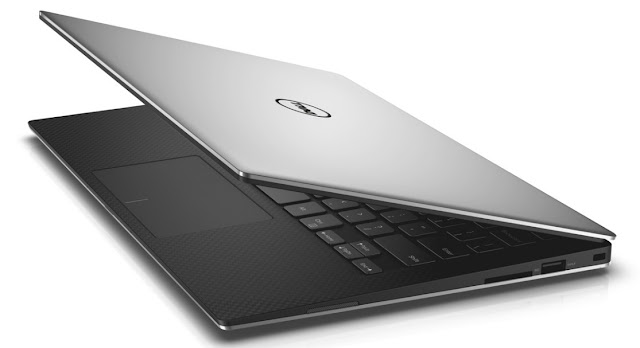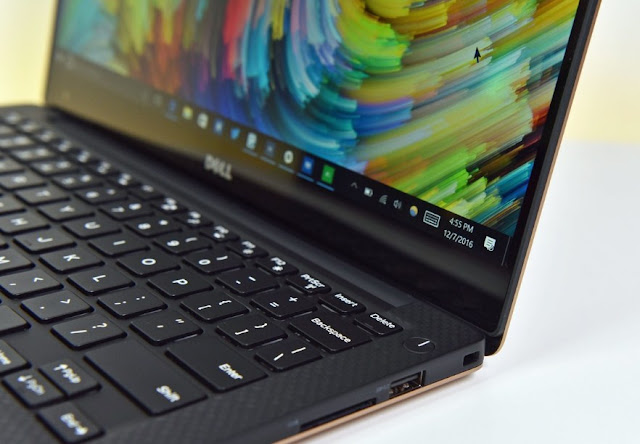Online gossip has it that Dell will launch a new XPS 13 in early 2018, with a white case instead of the current choice of silver or rose gold and with three USB-C ports replacing the existing ports. --THIS NEEDS A LINK OR SOMETHING. We're eager to see it, but this latest XPS 13 (starts at $799, $1,299 as tested) is more than enough to keep us satiated, with its upgrade in the form of Intel's eighth generation "Kaby Lake R" processor, blowing away laptops based on seventh generation silicon and reclaiming the ultraportable Editors' Choice that the previous model lost to the Razer Blade Stealth. We won't be able to make a final call until we see a Stealth with the new CPU, but you won't likely go wrong with either one.
The base model of the XPS 13 accompanies a seventh generation Core i3 and a scanty 4GB of RAM and 128GB strong state drive. The variant evaluated here packs 8GB of memory and a 256GB PCIe SSD, yet its fundamental fascination is the Core i7-8550U, the main quad center (instead of double center chip) in Intel's 15 watt family. The processor has a lower base speed (1.8GHz), however higher turbo speed (4GHz) and various inward upgrades from the past age.
The motor swap sounds like something out of Hot Rod magazine ("We put a Hemi V-8 into a Mazda Miata!"), however gives the XPS 13 another rent on life. It's as yet not worked for playing requesting recreations, but rather crunches through efficiency undertakings in recognizably less time.
As some time recently, you can get the Dell with either a 1,920 by 1,080 non touch show like our test unit's or a 3,200 by 1,800 determination touch screen. A Core i7-8550U arrangement with 16GB of memory and the superfine screen is $1,749. The two models frequently observe rebates and coupons on Dell.com.
Thin and Trim
Regardless of whether you've never observed one, you're most likely mindful of the XPS 13's claim to plan notoriety: he InfinityEdge show that spearheaded the present pattern toward ultra thin screen bezels, giving Dell a chance to crush a 13.3 inch workstation into a casing (0.6 by 12 by 7.9 inches) littler than 12.5 inch models like the Lenovo ThinkPad X270(0.8 by 12 by 8.2 inches) and scarcely greater than the late 11.6 inch MacBook Air (0.7 by 11.8 by 7.6 inches).
The Dell's claim to outline notoriety is that the best bezel has no space for a webcam, leaving the last clumsily put underneath the base left corner of the show for an approaching, unflattering picture of your nose and jaw. While the 2.7 pound framework is no weight in a folder case, we can't state the same for the couple of books you'll need to convey to stack underneath it for Skype meetings.
The PC is created from machined aluminum with a delicate touch carbon fiber composite console deck and palm rest. On its correct side are a USB 3.0 port equipped for charging handheld gadgets, a SD card opening, and a Noble (not Kensington) bolt space.
There's another USB 3.0 port on the left edge, alongside a Thunderbolt 3 port with USB-C and DisplayPort usefulness, a sound jack, a battery measure catch and column of LEDs, and the AC connector. Specialized idealists will take note of that the Thunderbolt 3 port has two, not four, PCI Express paths, the main peripherals we realize that may not work with it thus are work area gaming designs card boxes.
Winning Features
The Dell XPS 13's speakers are behind modest grilles on the sides rather than the standard openings in the base. They create better than expected sound, short on blasting bass however sufficiently noisy to fill a stay with clear tones free of twisting.
The unit's palm rest is more agreeable than its console, the last is on the shallow side (Dell says it has 1.3mm of movement) and somewhat stiffer than we like (the space bar specifically requires a firmer touch than the minor brush of a thumb we're accustomed to giving). However, the full estimated, illuminated console has a smart composing feel that prizes hone with energetic speed. The cursor bolt enters are in the best possible reversed T course of action. They group with the Fn key for Home, End, Page Up, and Page Down. The expansive, buttonless touchpad offers ultra smooth floating and tapping.
The Dell's 13.3 inch, full HD show is uncommonly brilliant and sharp, with a matte complete that empowers seeing from wide edges. Hues are pleasantly immersed and differentiate is high, with splendid whites and profound blacks. Points of interest emerge so plainly that we dialed Windows' default zoom from 150 down to 125 percent with no evil impacts. In reality, we'd vote to stay with the brilliant 1080p screen on the grounds that the 3,200 by 1,800 board would be excessively squinty at this size, aside from perhaps for in your face picture editors.
Quad Core FTW
To demonstrate what a distinction Intel's eighth generation CPU makes, we put both the new and old XPS 13 into our benchmark tables, alongside the main other "Kaby Lake R" machine we've seen up until now, the Lenovo Yoga 920 convertible, and seventh generation Core i7 portables drove by the Razer Blade Stealth. The new Dell began unequivocally by posting the most elevated score in our PCMark 8 Work office efficiency test, besting the Stealth (3,580 to 2,799 focuses, individually).
Read other : Acer Swift 3
Also, the new chip's two additional centers emphatically smashed the opposition in our string serious Cinebench estimation and Handbrake video altering workload. The "Kaby Lake R" XPS 13 completed the last in 1 moment and 12 seconds, right around an entire moment in front of the Razer and more seasoned Dell. Correspondingly, the Yoga and new XPS 13 fled from the double center participants in our Adobe Photoshop picture altering situation, again hacking a moment off the time required for the activity.
Then again, while it beat the outlines in our 3DMark illustrations benchmark, the XPS 13 still depends on incorporated as opposed to discrete designs, so neither it nor some other of these ultraportables will exceed expectations at much else besides easygoing amusements, they were no place close to the 30 outlines for each second required for smooth gameplay at local determination and high picture quality in our Heaven and Valley gaming reenactments.
At long last, the new Dell completed a solid second in our battery life rundown, going on for very nearly 16 hours of unplugged video playback (or double the season of the seventh generation Stealth). The Yoga 920 was considerably more amazing, cruising for 22.5 hours.
The New Ultraportable to Beat
With its spectacular boost in both muscle and battery life, Intel's new mobile processor instantly draws a line between haves and have nots in the laptop market, there are still plenty of fine portables with 7000 rather than 8000 series Core CPUs, but no surprises when an otherwise comparable machine with the former goes head to head with the latter. That's why we're taking back the ultraportable Editors' Choice that the 13.3-inch Razer Blade Stealth won in its last go round with the XPS 13, at least until a "Kaby Lake R" Razer reaches PC Labs. The new CPU revitalizes Dell's perennial contender, making a great laptop even greater.
Read other : Apple iMac 21.5-Inch With 4K Retina Display (2017)





Thank you for visiting. Please leave a comment or request the computer or laptop you want to review. ConversionConversion EmoticonEmoticon